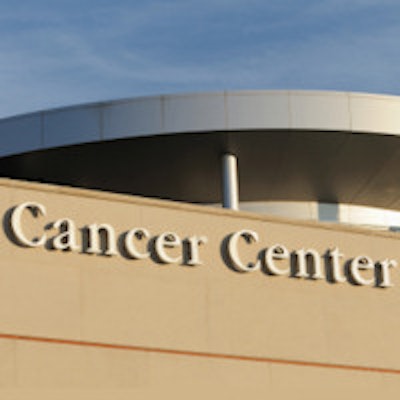
Medicare costs for elderly patients with oral and pharyngeal cancers are significantly impacted by treatment selection, according to a new study in JAMA Otolaryngology -- Head & Neck Surgery. Patients who chose chemotherapy cost the program $32,000 more on average over five years than those who picked alternative treatments.
The study looked at the Medicare cost determinants for patients age 66 and older who were diagnosed with oral and pharyngeal cancers between 1995 and 2005. After evaluating for factors such as age, sex, and geography, the researchers found three primary determinants of increased cost: treatment selection, number of comorbidities, and race (JAMA Otolaryngol Head Neck Surg, June 4, 2015).
"Given the high healthcare resource use associated with the treatment and downstream care of patients with oral cavity and pharyngeal cancers, efforts have been directed toward understanding and characterizing the economic burden associate with this disease," wrote lead study author Christopher Hollenbeak, PhD, from the departments of surgery and public health sciences at the Penn State Hershey College of Medicine, and colleagues. "The treatment modalities were the largest drivers of cost, with surgery combined with radiation and chemotherapy associated with significantly increased five-year costs compared with surgery alone."
Oral cancer costs
“The treatment modalities were the largest drivers of cost, with surgery combined with radiation and chemotherapy associated with significantly increased five-year costs.”
Hollenbeak and colleagues looked at Medicare data from nearly 11,000 patients who were newly diagnosed with oral cavity and pharyngeal cancers between January 1995 and December 2005. They obtained the patient and payment data from the Surveillance, Epidemiology, and End Results-Medicare linked database. They then calculated the total five-year costs paid by Medicare, adjusting for various patient demographics, comorbidities, disease characteristics, and chosen treatment types.
Because patients with pharyngeal tumors are more likely to receive chemotherapy and radiation, pharyngeal cancers cost Medicaid $19,000 more over five years than oral cavity cancers. On average, oral cavity cancer treatments cost $72,000 and pharyngeal cancer costs $91,000.
The researchers reported that treatment type was the largest determinant of costs paid by Medicaid. Chemotherapy cost the program $26,919 more for oral cavity cancer and $37,407 more for pharyngeal cancer than other treatment types. In contrast, surgery and radiation therapy cost on average $21,000 for oral cavity tumors and $29,000 for pharyngeal tumors, while choosing no treatment, saved the program $33,000 on average.
Race and coexisting diseases largely impact costs
Although patients with oral cavity cancers were more likely to be female and older than those with pharyngeal cancers, demographics in general did not significantly impact cancer costs. The exception is race, with those who identified as black had "large and significant effects on five-year costs," according to the study authors.
These patients represented about 5% of oral cavity cancer cases and cost Medicaid $11,450 more on average than those who identified as white, who represented 88% of cases. Similarly, blacks accounted for 11% of pharyngeal cancer cases but cost Medicaid $25,093 more than whites, who accounted for 77% of cases.
The number of comorbidities a patient had also significantly affected five-year Medicaid costs.
"We similarly have found that costs increased approximately twofold for oral cavity and pharyngeal cancers between patients with one or two comorbidities compared with those with three or more corbidities," Hollenbeak and colleagues wrote.
Having one or two coexisting conditions increased the mean cumulative costs by $13,500 on average for patients with oral cavity and pharyngeal cancers. If a patient had three or more coexisting conditions, costs increased by $22,196 for those with oral cavity cancer and $27,799 for those with pharyngeal cancers. The most common types of comorbidities were hypertension, chronic pulmonary disease, and fluid and electrolyte disorders.
While the researchers were able to access and compare a significant amount of data, the database did not include smoking or human papillomavirus (HPV) status, both of which impact oral cavity and pharyngeal cancer risk and potentially associated costs. The costs are also only reflective of older people with the studied cancers, so the conclusions cannot be generalized for younger patients, the study authors noted.
"Despite these limitations, our study reveals the significant economic burden associated with oral cavity and pharyngeal cancers in a contemporary cohort of elderly patients from a Medicare cost perspective," they concluded. "With an attributable cost of $27,000 for patients with oral cavity cancer and $40,000 for pharyngeal cancers, there are substantial costs attributable to this disease."



















